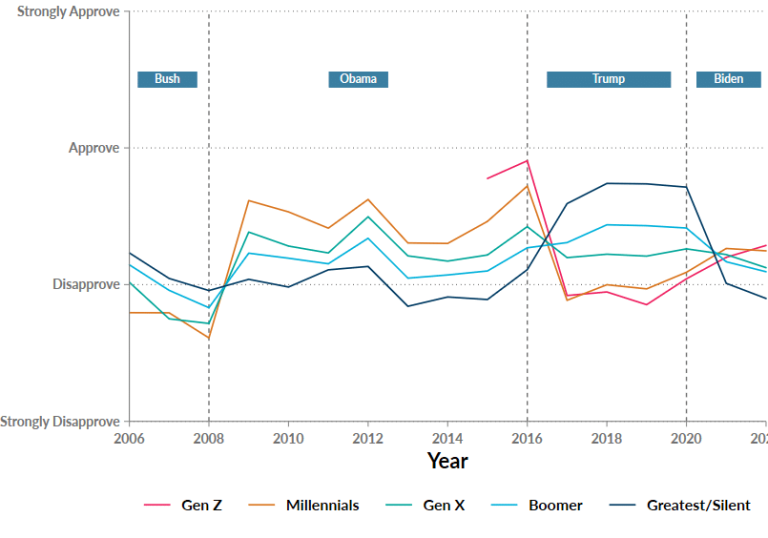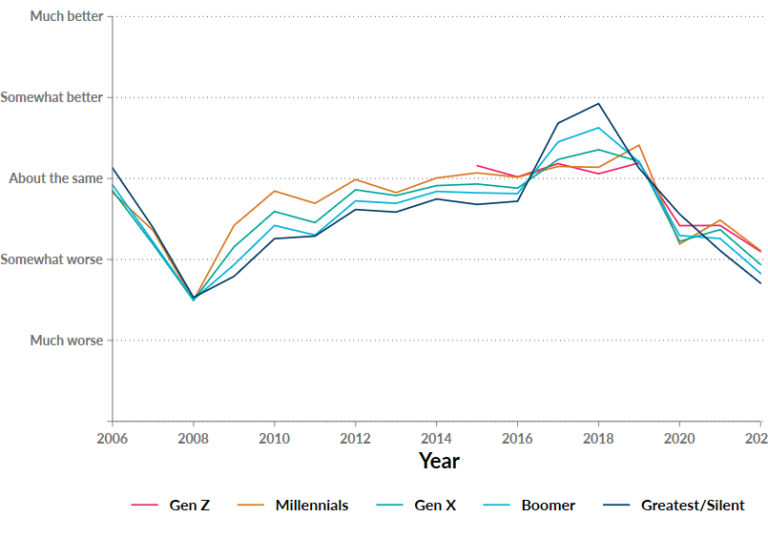The damage caused by the COVID-19 pandemic is unprecedented in the experience of modern Americans. Beyond the public health crisis that continues to wreak havoc on American communities, the country also faces an ongoing and significant economic crisis. Starting in March, the economic fallout was severe and swift. By April, the number of open small businesses was down by 44% and revenues had dropped by 50% relative to January of 2020. This led to a dramatic increase in the U.S. unemployment rate from an over 50-year low of 3.5% in February of 2020 to 14.8% in the span of only two months, leaving 22.8 million Americans searching but unable to find a job. And the economic damage was felt disproportionately across the population: the worst of the immediate downturn fell most acutely on jobs in leisure and hospitality, where unemployment increased from 5.7% to 39.3% between February and April and young adults, people of color, and women are overrepresented.
Since the start of the initial COVID-fueled downturn, the U.S. government has implemented expansive stimulus and relief programs, including the $1.9 trillion American Rescue Plan Act and the $2.2 trillion Coronavirus Aid, Relief, and Economic Security (CARES) Act. The relief packages included expanded Unemployment Insurance and distributed direct relief payments (i.e., stimulus checks), among other provisions. The weight of policy/academic research from the past year points in the same direction: that the scale of public relief had a substantial and positive impact on people’s finances and ability to spend into the economy.
Delivering relief in the form of direct cash to individuals and families worked — but it only worked for a time. As the virus continues to devastate American communities, data shows that a speedy recovery is far from assured. As policymakers consider the best path forward, the Berkeley Institute for Young Americans (BIFYA) is publishing an interactive calculator (see below) to facilitate real-time modeling of potential policy designs for national relief payments. We hope that this will help inform ongoing debates as new income supports are considered.
* Update 3/23/21: Fixed an error in the display of family phaseouts and updated how the calculator implements the option to force phaseouts for families with one or more dependents.
Interactive Parameters: Our interactive allows users to modify various “policy parameters,” which are detailed below, to control the simulated relief payment programs. The “slider parameters” have a fixed minimum and maximum range and defined steps (for instance, the Program Budget ranges from $0 to $650 billion in steps of $5 billion).
Default Programs: Allows the user to choose between different “default” simulation programs. The “Custom” option leaves all policy parameters available to the user. The “Consolidated Appropriations Act ($600)” program simulates the second round of relief payments, which included $600 payments for adults and $600 payments for child dependents. The “CARES Act ($1,200)” simulates the original relief payments distributed in 2020.
Program Budget: Determines the total simulated program budget (aggregate expenditures) for relief payments in billions of dollars. The program budget is adjusted to reflect expenditures on payments to foreign addresses (e.g., U.S. residents living abroad). See “Adjustment to the Budget” in the Appendix.
Universal Eligibility: Governs whether the simulation will use a defined eligibility threshold (“Not Universal”) for calculating relief payments or if it will eliminate phase outs of payments at higher income levels (“Universal”). It is important to note that the Universal setting does not affect Categorical Eligibility. The Universal setting disables the Equivalence Adjustment, Eligibility Threshold, Kink Point, and the Joint Filer Kink Point Multiplier parameters.
Equivalence Adjustment: Determines Eligibility Thresholds for tax units with one or more dependents. If “Equivalent Phaseouts” is selected, then the Eligibility Threshold will be set proportionate to the additional payment the tax unit receives, which results in equal phaseouts for all tax units within a particular filing group (i.e., head of household or joint filers) regardless of the number of dependents. Alternatively, “Force Phaseouts” will force Eligibility Thresholds to the same point for all tax units within a particular filing category. As an example, if the Eligibility Threshold for a joint filing tax unit with no dependents were set at $150k, the Force Phaseouts setting would cause the simulated payments to any joint filing tax unit with one or more dependents to also phaseout at $150k. This would lead to a steeper phaseout for these tax units. Alternatively, the Equivalent Phaseouts setting would extend the Eligibility Threshold for joint filing tax units with multiple dependents such that the phaseouts were equivalent for all tax units within the joint filer group.
Eligibility Threshold: This parameter sets (in dollars) the end of the phaseout range for single adult tax units with no dependents. Tax units with Adjusted Gross Incomes at or above this threshold are ineligible for simulated payments. The Eligibility Threshold for other filing groups is determined by the generosity of the simulated payments, number of dependents, and the setting on the “Joint Filer Kink Point Multiplier” parameter.
Kink Point: This parameter sets (in dollars) the end of the phaseout range for single adult tax units with no dependents. Tax units with Adjusted Gross Incomes at or below this point are eligible for the maximum payment under the simulated relief program. Relief payments are reduced by the phaseout rate for tax units with Adjusted Gross Incomes above the Kink Point and below the Eligibility Threshold.
Joint Filer Multiplier: Determines the generosity of payments for families that file their taxes jointly relative to tax units with a single adult. A Joint Filer Multiplier of 1.0 will result in maximum payments to joint filer tax units that are 100% higher than the maximum payment for single adults.
Joint Filer Kink Point Multiplier: Sets the Kink Point — the start of the phaseout — for joint filer tax units relative to the Kink Point for single adult tax units. These values are fixed across all unit sizes, regardless of the number of dependents. A Joint Filer Kink Point Multiplier of 1.0 will result in the start of the phaseout for joint filer tax units being set 100% higher than the start of the phaseout for single adult tax units. A value of 0 will result in equivalent Kink Points for single adult tax units and joint filer tax units. For example, if the Kink Point is set at $75k for single adult tax units (with no dependents), and the Joint Filer Kink Point Multiplier is set to 1.0, then joint filer tax units (with no dependents) will have a Kink Point of $150k, representing the start of their phaseout range. The start of the phaseout for tax units with a head of household status is set to a constant 50% of the difference between the start of the phaseout for single adult tax units and joint filer tax units.
Categorical Eligibility: We include two categorical eligibility options: inclusion of tax units without a Social Security Number (SSN) and inclusion of adult dependents. As we discuss in the Methodology, we do not have direct data for SSN status within our sample of the U.S. householder population. Therefore, we conduct our own imputations to infer this status. We also do not directly impute “mixed household status” as one of our assumptions is that if one spouse is imputed to have an SSN, both spouses do. We also do not directly observe or impute whether respondents have a Individual Tax Identification Number (ITIN), which many undocumented immigrants use to pay taxes.
Weight Specification: We compute custom weights that are adjusted to target aggregated administrative data released by the Internal Revenue Service for the CARES Act. These “raked weights” match the number of payments distributed in the CARES Act along a number of dimensions (see “Raked Weights” in the Appendix). We recommend using these weights for simulations with the interactive; however, we also include the original weights for interested users
Information presented here is derived in part from publicly-available data produced by the Transfer Income Model, Version 3 (TRIM3). The findings presented here required additional imputations and assumptions and are attributable only to the author of this analysis. TRIM3 is copyrighted by the Office of the Assistant Secretary for Planning and Evaluation at the Department of Health and Human Services and developed and maintained at the Urban Institute.










